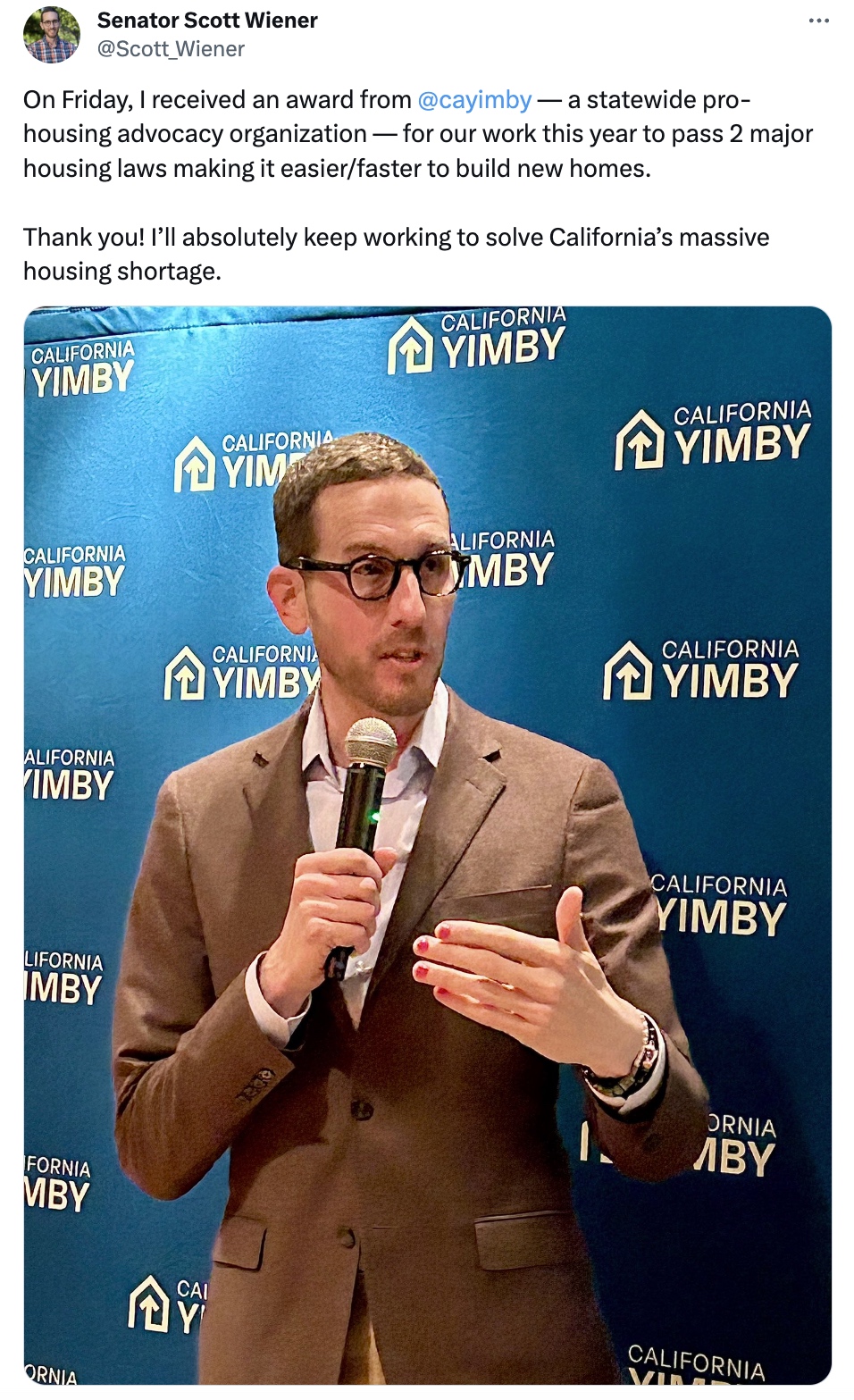The Homework: December 13, 2023

Welcome to the December 13, 2023 Main edition of The Homework, the official newsletter of California YIMBY — legislative updates, news clips, housing research and analysis, and the latest writings from the California YIMBY team.
News from Sacramento
It’s a quiet time in Sacramento, as the Legislature is on recess until January 3, 2024 – but that doesn’t mean nothing is happening. With new leadership roles announced, the Senate will swear in Senator Mike McGuire as the next leader of the State Senate on February 5th, replacing the outgoing Senate Pro Tem Toni Atkins.
The Senate has yet to announce its committee assignments; stay tuned to future editions of The Homework, and follow the California YIMBY Twitter channel, @cayimby, to stay up to date on developments on legislative policy committees and related news.
Important dates to know:
- The legislature resumes session on January 3rd, 2024.
- For those who are tracking two-year bills, January 19th, 2024, is the last day for two-year bills to be heard by committees and reported to the Floor.
California YIMBY is also in the final stages of developing our legislative package for the 2024 legislative year. More to come on our priority bills in the coming weeks.
Housing Research & Analysis
Exclusionary By Design: The History of Zoning in Boston Suburbs
While popular scholarship has extensively documented the racially exclusionary effects of low density and single family zoning, particularly in its earliest forms, there is less agreement on whether it was adopted for the explicit purpose of segregating by race and class.
Amy Dain’s “Exclusionary By Design: An Investigation of Zoning’s Use as a Tool of Race, Class, and Family Exclusion in Boston’s Suburbs, 1920 to Today” draws extensively on historical planning documents to build a strong case that Boston’s suburban municipalities did indeed adopt strict low-density zoning for the purpose of maintaining racial and class segregation.
FAR Away from Home
In addition to the use of zoning regulations to control the location, density, and types of housing, many jurisdictions use similar regulatory tools to limit the total floor space a building can have. These limits, which typically take the form of a ratio of land to square feet (or square meters) of floor space, are called “floor area ratios,” or FAR.
The city of Mumbai in India has historically had very restrictive residential FARs, capped at 2.7 times the land area of a given parcel. But in 2018, the city relaxed the FAR limit along wider roads, allowing FARs up to 8 (i.e., for every square foot of land on a parcel, a builder could build 8 square feet of housing or other usable space).
Houser Headlines
- Yet Another Casualty of San Francisco’s Disastrous Housing Policy | The New Republic
- Is historic preservation just another NIMBY tactic to avoid California housing laws?
- Opinion: UC system must address its student housing shortage – The San Diego Union-Tribune
- How San Diego ended up with ADU “apartment buildings” – CalMatters
- Berkeley approves increased height limits near campus to ease UC student housing crunch
- California needs more housing — especially in the suburbs – Orange County Register
- How the suburbs could become 15-minute cities
- Is Millbrae using a ‘racist’ amendment in the state constitution to block homeless housing?
- Where is the Bay Area’s housing crisis impacting people the most? Here’s one key stat
YIMBY Social – Top Posts

Share the good word
We welcome your ideas and feedback — send story tips and ideas to Homework@cayimby.org.